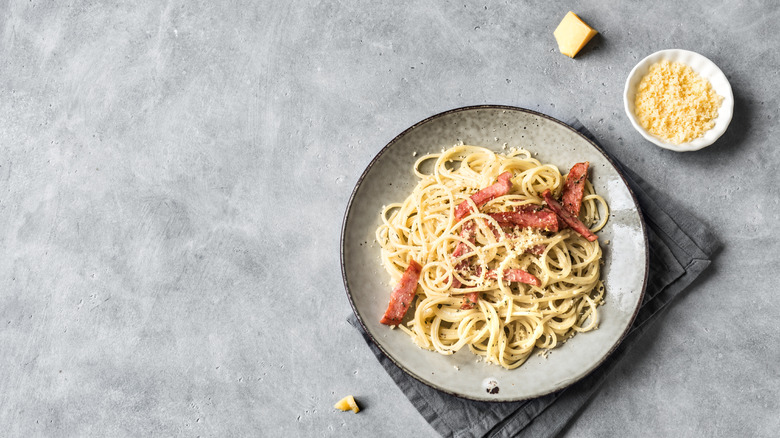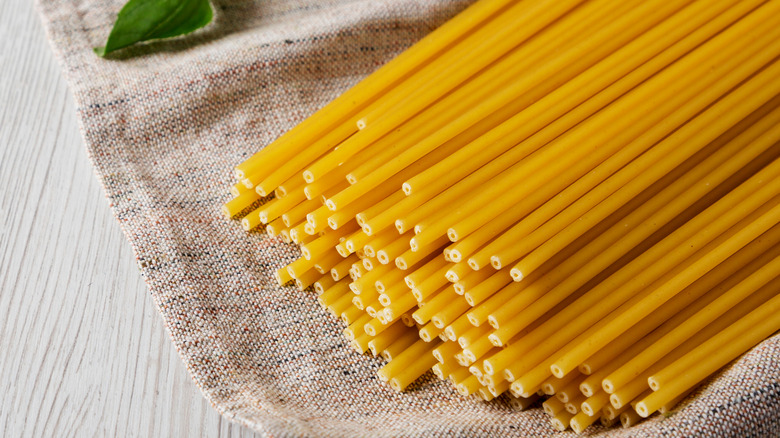The Best Type Of Pasta For Carbonara Sauce
How can eggs, cheese, and pancetta create such a rich and decadent carbonara sauce? We're not really sure about the wizardry behind this magic, but we're certain that it's enjoyed by home cooks and chefs on a global scale. In fact, La Cucina Italiana states that the traditional carbonara recipe is constantly evolving, as notable chefs put their unique spins on it. Examples include seafood carbonara with smoked trout or bottarga, tyrolean carbonara with leeks and dehydrated speck powder, and the French-style "carbonaragate" with crème fraiche and a raw egg perched on top.
These kinds of culinary expansions are made possible because the base recipe for pasta carbonara is so simple. As The Spruce Eats explains, eggs are whisked together with cheese, hot pasta water, and black pepper before being slowly mixed into a pan of pasta and cooked pancetta (guanciale or thick-cut bacon may be used as well). And because so few ingredients are used, it's crucial to choose the very best quality when it comes to the eggs, cheese, pancetta, and of course, the pasta.
Now when it comes to the choice of pasta, it's often tempting to use whatever is available in the pantry, like spaghetti or angel hair. But there's a certain type of pasta that is the absolute best when it comes to soaking up that creamy carbonara sauce. Here's what that is.
It looks like a straw
According to Taste of Home, bucatini is the best pasta choice for carbonara because of the hole in the middle. The site explains that carbonara sauce is able to flow through both the inside and outside of each noodle, which allows the palate to really taste the sauce. And since bucatini pasta resembles a straw, the inside and outside of each noodle strand can be cooked to perfection, per Pizza Cappuccino. It also has roughly the same cooking time as spaghetti despite its larger size.
Popular in Lazio, bucatini pasta is versatile enough to be stir-fried, mixed with meat sauces, and incorporated into casserole dishes. Its name comes from the Italian word "buco," which means "hole," per Chef's Mandala. The source explains that this pasta was created in Amatrice, a town that specializes in guanciale, which, to this day, serves as a notable addition to traditional pasta carbonara recipes.
So next time you're making pasta carbonara, ditch the other pasta noodles and opt for bucatini. It soaks up the sauce on the outside and inside so you can really taste the egg, pancetta, and parmesan cheese flavors.

